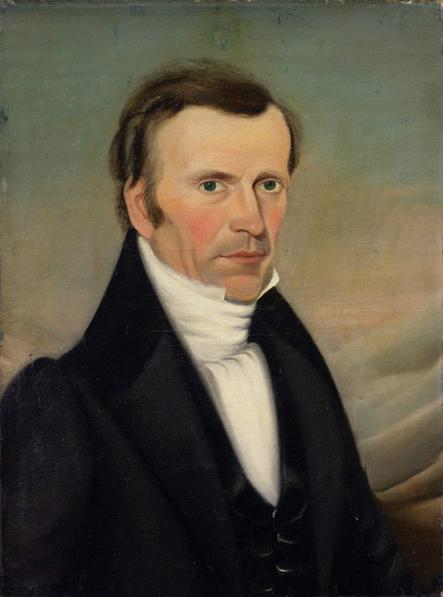Frederick G. Williams
(1787-1842)


By Susan Easton Black
Youthful Frederick had a near-fatal accident when he and friends attempted to cross Lake Erie on the ice. The ice broke, leaving them stranded on a floating ice block until rescued by a boat captain the next day. Frederick never fully regained his health. Perhaps it was health problems that led him to study the herb-based Thompsonian method of medicine. Frederick worked as a medical doctor until his call to colors in the War of 1812. Following battles on the northern frontier, Frederick became a boat pilot, traversing the waterways from Buffalo to Detroit.
By 1816 Frederick had become a resident of Warrensville, Ohio. When missionaries called to the Lamanites arrived in Kirtland, Ohio, Frederick was practicing medicine once again and serving as the justice of the peace in town. He carefully compared the teachings of the Book of Mormon with the Holy Bible before entering baptismal waters in October 1830. Following his baptism, Frederick accompanied the missionaries on their continuing journey to the western frontier.
In March 1832 Frederick was called to be a counselor in the First Presidency of the Church. The Prophet Joseph Smith wrote,
Brother Frederick G. Williams is one of those men in whom I place the greatest confidence and trust, for I have found him ever full of love and brotherly kindness. He is not a man of many words, but is ever winning, because of his constant mind. He shall ever have place in my heart. God grant that he may overcome all evil. Blessed be Brother Frederick, for he shall never want a friend; and his generation after him shall flourish.1
When the Kirtland Temple was dedicated on March 27, 1836, Frederick testified that an angel sat between him and Joseph Smith Sr. and “remained there during the prayer.” He further testified that “the Savior, dressed in his vesture without seam, came into the stand and accepted of the dedication of the house, that he saw him, and gave a description of his clothing and all things pertaining to it.”2
Frederick’s faith wavered following the temple dedication. On May 29, 1837 the Kirtland High Council discussed grievances against him and concluded, “[His] course for some time past has been injurious to the Church of God. . . . We should have an investigation of [his] behavior, believing it to be unworthy of [his] high calling.” Frederick’s name was not mentioned in the writings of the Prophet Joseph Smith for three months. At the September 3, 1837 conference, Frederick was not sustained as a counselor in the First Presidency. Historical records are inconclusive as to whether he lost his Church membership. The answer may be found in the Prophet Joseph’s writings on August 5, 1838: “Frederick G. Williams had recently been re-baptized.”3
Frederick united with the Saints in Missouri and in Illinois. On April 6, 1840 he spoke to a congregation of Saints in Nauvoo and expressed his desire to be forgiven for past wrongs. During the next two years, he was a frequent visitor in the home of Joseph Smith. One night Joseph said to him, “Brother Frederick, I don’t like to see you leave. You are going home to die.” He replied, “I am already a dead man.”4 Frederick died of a lung hemorrhage in October 1842 in Quincy, Illinois at age 54.
1. Nancy Clement Williams, After 100 Years! Meet Frederick Granger Williams (Independence, MO: Zion’s Printing and Publishing Company, 1951), p. 77.
2. George A. Smith, “Historical Discourse,” Journal of Discourses 26 vols. (Liverpool: Latter Day Saints’ Book Depot, 1867), 11:10.
3. Smith, History of the Church, 3:55.
4. Williams, After 100 Years! Meet Frederick Granger Williams, pp. 126-127.
Additional Resources
- Biography of Frederick G. Williams (josephsmithpapers.org)
